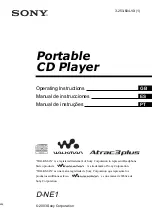
84
Appendix A : General Information. Hard Disks
If you are going to keep several operating systems on your computer, it is
better to install those that can be booted from logical partitions onto logical
partitions, so that they do not use up extra primary partition space.
A.6
Formatting Hard Disks
Within each of the partitions information has to be organized in a way
understandable for the operating system that uses the partition. This
organization is the
file system
. Format and location of information (the logical
structure of a partition) for MS-DOS and Windows is created by the FORMAT
program.
FORMAT program performs the following functions:
•
It creates the boot record;
•
It creates the file allocation table (FAT);
•
It marks bad clusters so they are not used.
After formatting, logical disks created by the FDISK program are organized
as follows:
•
Logical disks start with the boot sector;
•
One or several copies of file allocation table (FAT) are placed after the
boot sector;
•
Next goes the root folder;
•
Then the data area.
Each logical disk has to be formatted with FORMAT separately.
Formatting a partition is done by issuing a DOS command:
FORMAT C:
To create a system (bootable) logical disk, it has to be formatted with
FORMAT with /S parameter:
FORMAT C: /S
Another way is to transfer the system to the partition that has been
formatted with /B parameter is booting the computer from a system diskette
and issuing the command
SYS C:
IO.SYS, MSDOS.SYS, COMMAND.COM files that are necessary for the
operating system to be booted are copied from the diskette to the disk.
Initial loader code is written to the boot sector.







































